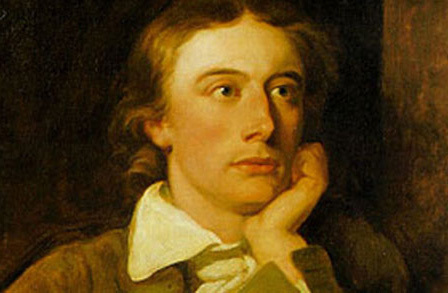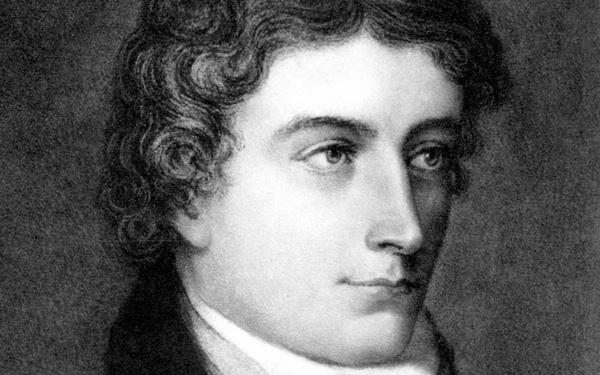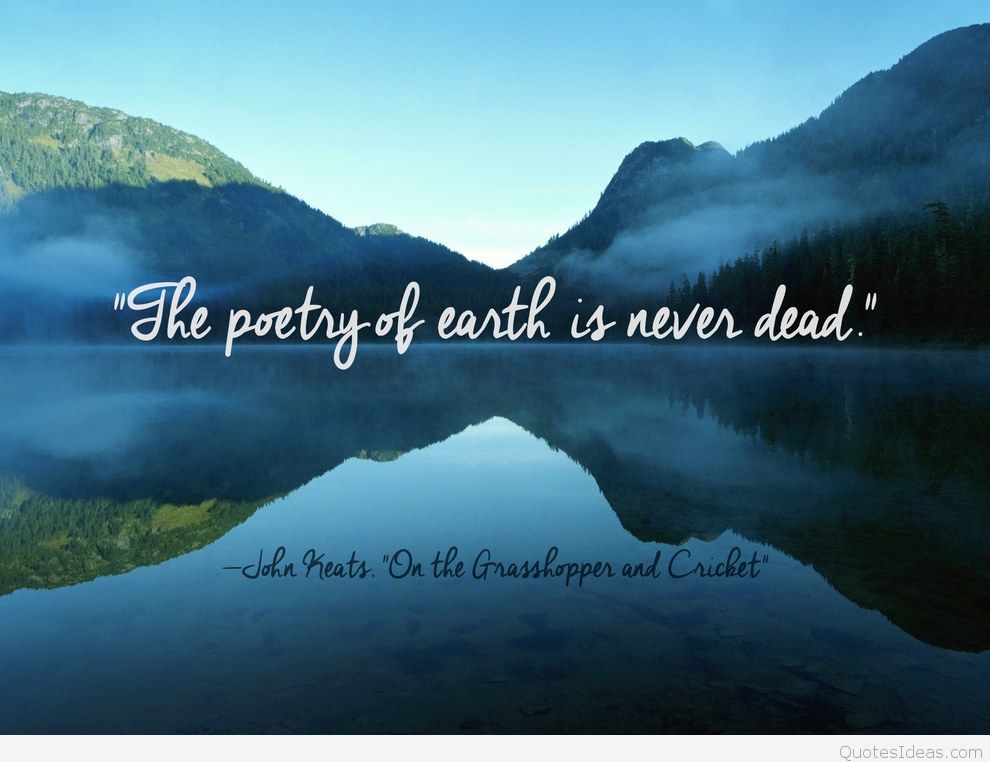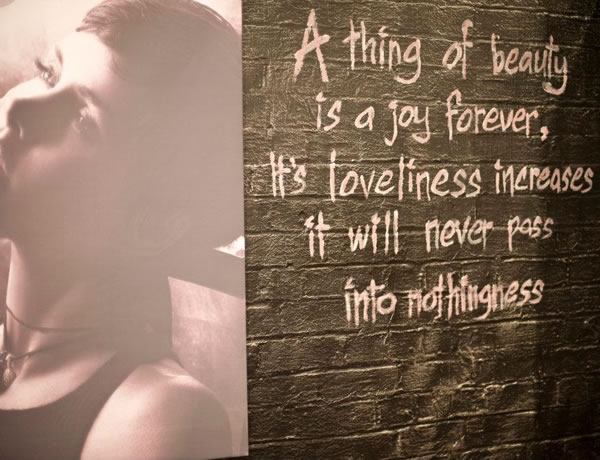About the poem: John Keats, an English poet, born on December 31, 1795, was the last the Romantic. While Scott was merely telling stories, and Wordsworth reforming poetry or upholding the moral law, and Shelley advocating impossible reforms, and Byron voicing his own egoism and the political discontent of the times, Keats lived apart from men and from all political measures, devoting himself and worshipping beauty; too reflect some splendour of the natural world as he saw or dreamed it to be. His humble family background will make us respect this young poet more. He was born in London to a stable keeper; there was hardly any atmosphere to sow and nurture his poetic gifts.
Before, Keats turned 15, both his parents died, thereby giving his and his siblings’ custody to their guardian. Keats registered as a medical student at Guy’s Hospital and began studying there in October 1815; within a few months, he became a junior surgeon. This led his family to believe that he will pursue a long career in the field of medicine, which in turn would guarantee financial stability. He was only 19, when he wrote “An Imitation of Spenser” in 1814. His first work that appeared in print was the sonnet “O Solitude” which was published in Leigh Hunt’s magazine The Examiner in May 1816. Five months after Charles Cowden Clarke introduce Keats to Leigh Hunt, a close friend of Byron and Shelley, the first version of Keats’s verse, called “Poems” was published; it included “I Stood Tiptoe” and “Sleep and Poetry”. There were two very important women in his life: Isabella Jones and Fanny Brawne. His poems such as “The Eve of St. Agnes” and “The Eve of St. Mark” may have been influenced by her. Drafts of various poems suggest that he might have met Fanny Brawne in September or November in the year 1818. Keats died on 23 February, 1821, in Rome, of tuberculosis, a disease he has picked up, most probably, while nursing his brother Tom.
Poetic Devices in To Autumn by John Keats
PERSONIFICATION: Line 2-3: “autumn” has been personified. It has been personified throughout the poem on different occasions.
METAPHOR: Line 15: autumn’s hair is like light chaff that surrounds a heavy seed.
Throughout the poem there are many pastoral images wherein lies the beauty of the poem. The mourning of the animals in the conclusive part of the poem is a part of the pastoral images.
To Autumn Summary by John Keats
The poem is one of the most dignified creations of Keats, composed on 19 September, 1819 and published in 1820, alongside his other poems such as “Lamia” and “The Eve of St. Agnes”. It is the final work in the group of poems known as Keats’s “1819 odes”. The poem in a way marked the end of his poetic career. The poem has three eleven-line stanzas which describe a progression through the season, from the late maturation of the crops to the harvest and to the last days of autumn when the winter is next to come. The rich imagery that feels the poem has been achieved by the personification of autumn. The poem opens with the speaker addressing autumn; he gives a description of its abundance and the intimate affair with the sun, which lets the fruits ripe and the flowers to bloom. After the introduction to the matter in hand, the speaker moves on to give autumn a Godly image, where he describes Autumn as the female goddess who often sits on the granary floor, her hair “soft lifted” by the wind, and often seen sleeping in the fields or watching a cider-press squeezing the juice from the apple. In the following stanza the speaker talks to the Autumn, and asks it not to
The poem opens with the speaker addressing autumn; he gives a description of its abundance and the intimate affair with the sun, which lets the fruits ripe and the flowers to bloom. After the introduction to the matter in hand, the speaker moves on to give autumn a Godly image, where he describes Autumn as the female goddess who often sits on the granary floor, her hair “soft lifted” by the wind, and often seen sleeping in the fields or watching a cider-press squeezing the juice from the apple. In the following stanza the speaker talks to the Autumn, and asks it not to wander around and to listen to her own music instead of following spring. At twilight, the “small gnats” hum among the “river sallows” or willow trees, lifted and dropped by the wind and “full-grown lambs” bleat from the hills, crickets sing, Robin whistle from the garden, and swallows, gathering for their coming migration. Sing from the skies.
To Autumn Analysis by John Keats
The title of the poem makes it very clear that the following lines are to be devoted to the season Autumn. Autumn is described as the season of “fruitfulness” it is the close friend of sun, who is “maturing” or in other words growing old with each passing day. These two friends conspire to discuss “how to load and bless/ with fruit the vines that round the thatch-eves run”. Here loads refer to the fruits that the vines support. The thatched cottages may suggest a pastoral setting, including shepherds, sheep, maidens, and agriculture. “Pastoral” as a literary is said to have originated in ancient Greece and ode too is a Greek form, so it is appropriate for this ode to include such pastoral themes. The entire introductory stanza has been diligently used to show the fruitful nature of autumn as the poet talks about “fruit with ripeness to the core”.
From the core now the ripeness moves on “to swell the gourd, and plump the hazel shells/ with a sweet kernel;” autumn clearly isn’t just the sad gloomy season where thing die or turn brown or fall to the down, it also is a message of the springs’ arrival. At this point the poet introduces the reader to the second stanza, which starts with a rhetoric question: “who hath not seen thee oft amid thy store?” the poet finally give autumn image of a female goddess whose “hair soft-lifted by the winnowing wind;” winnowing refers to the act of separating grain from the chaff, the edible from the inedible. And the winnowed is blown away by the wind because of its light weight. Drowned by the “poppies” the autumn is asleep and the “hook” or sickle, which she used to cut the flowers, lay at rest unused. The reference to poppies becomes important as in England in the 19th century it was used to make opium. “Sometimes like a gleaner” autumn keeps her “laden head across a brook’; yet another image of weight through the word “laden”. After looking through all the places, autumn can be looked for in the “cider-press” where she “with patient look” watches “the last oozing”. The concluding stanza begins with yet another rhetorical question: “Where are the songs of Spring? Ay, where are they?” Here the poet hints at the comparatively a momentary presence of spring who does not exist for long. In line 25 and 26, the poet begins to describe the “song” autumn, of
Here the poet hints at the comparatively a momentary presence of spring who does not exist for long. In line 25 and 26, the poet begins to describe the “song” autumn, of course, it is a metaphorical song. He describes the patches of clouds, between which the patches of the sky can be seen as “barred”. These clouds appear to “bloom”, like flowers, as they light up with the colors of the sunset. Though the day is “dying” yet it is a “soft”, gentle death. The gnats by the riverside “mourn” the dying day like a choir at a funeral. They are wailing, mourning the death of the day. The poem concludes with more animal sounds, such as the bleating of the lambs near the small stream, or “bourn” that flows down a hill. Crickets who are “singing” by rubbing their wings together, softly the red breast robin is whistling in an enclosed garden or “garden-croft”. The poem seems to abruptly end with the line”and full-grown lambs loud bleat from hilly bourn”.
Tone of the poem: “To Autumn” is probably one of the simplest odes by Keats, in both its form and descriptive surface, there is nothing very complex about it. But the extraordinary achievement of the poem lies in its ability to suggest, explore, and develop a rich abundance of themes without ever ruffling its calm, gentle description of autumn. The poem presents Keats as an appreciator of beauty as it is, without much alteration or lamentation.
Conclusion: The pastoral images harvested in this poem, enhances our imagination to paint the beauty of autumn, to see its qualities and experience it from a different perspective. The season is presented to the reader metaphorically as someone who conspires, ripens fruit, and also harvests as well as makes music. Keats has described it as a paradise on earth by the use of the extravagant images, with its growth autumn stands for growth, maturation and finally an approaching death.
Some online learning platforms provide certifications, while others are designed to simply grow your skills in your personal and professional life. Including Masterclass and Coursera, here are our recommendations for the best online learning platforms you can sign up for today.
The 7 Best Online Learning Platforms of 2022
- Best Overall: Coursera
- Best for Niche Topics: Udemy
- Best for Creative Fields: Skillshare
- Best for Celebrity Lessons: MasterClass
- Best for STEM: EdX
- Best for Career Building: Udacity
- Best for Data Learning: Pluralsight














